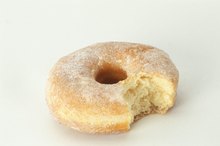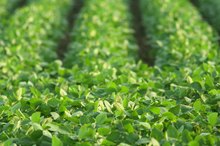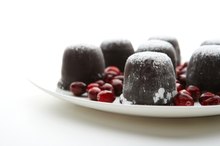What does fact checked mean?
At Healthfully, we strive to deliver objective content that is accurate and up-to-date. Our team periodically reviews articles in order to ensure content quality. The sources cited below consist of evidence from peer-reviewed journals, prominent medical organizations, academic associations, and government data.
The information contained on this site is for informational purposes only, and should not be used as a substitute for the advice of a professional health care provider. Please check with the appropriate physician regarding health questions and concerns. Although we strive to deliver accurate and up-to-date information, no guarantee to that effect is made.
What Does Candida Look Like in Stool?
Candida Albicans is a kind of yeast, or intestinal flora, that normally lives in the gastrointestinal tract. Yeast can reproduce and multiply if the immune system becomes compromised or from eating a diet too high in sugar. As yeast becomes overabundant, an infection can occur in the digestive system as well as other parts of the body, including the mouth and reproductive tract. One of the first signs of a yeast infection is apparent candida discharge in the stool.
Identification
Excessive candida may be present in the stool during periods of extreme yeast growth or die-off, also called Herxheimer Syndrome. Die-off occurs when your body is getting rid of excess yeast. Stools with an overabundance of yeast may contain a white, stringy material that is similar to thin pieces of string cheese. This cheesy substance is one of the most common signs of too much candida in a bowel movement. Yeast in the stool has also been compared to cottage cheese. The candida can also look "frothy," similar to yeast in bread mix when it is rising, or candida can look like a mucus-like substance.
- Excessive candida may be present in the stool during periods of extreme yeast growth or die-off, also called Herxheimer Syndrome.
- The candida can also look "frothy," similar to yeast in bread mix when it is rising, or candida can look like a mucus-like substance.
Significance
Yeast, Gluten and Dairy Free Diets
Learn More
Knowing what is and isn't yeast in stool is important as other substances may appear similar to candida but are indicative of different conditions. Gray, pale stools may indicate gall bladder disorders, hepatitis or absorption problems. Green colored stool may be related to bacteria but is most often caused by food coloring or vegetables and fruit of color.
Considerations
An overabundance of candida can be symptomatic of many conditions, including chronic fatigue syndrome, behavior disorders, depression and mood swings, memory problems, joint problems, irritable bowel syndrome and chronic sinus infections.
Warning
Recurrent Yeast Infections and Eating Too Much Sugar
Learn More
An increase in candida in the stool may occur with constipation or diarrhea. However, if yeast-overgrowth increases for weeks at a time or with rectal bleeding, consult your physician for an evaluation as too much mucus could be a symptom of Crohn's Disease or Ulcerative Colitis.
Prevention/Solution
If you notice excessive candida in your stool and think the cause is from too much yeast, reducing the amount of bread products in your diet may help. Eating yogurt and taking probiotics will help balance the candida and other intestinal flora too.
Related Articles
References
- Mayoclinic.com
- Dr Larry Wilson
- Spampinato C, Leonardi D. Candida infections, causes, targets, and resistance mechanisms: traditional and alternative antifungal agents. Biomed Res Int. 2013;2013:204237. doi:10.1155%2F2013%2F204237
- Cunningham E. Is there a diet for "yeast allergy"?. J Acad Nutr Diet. 2013;113(3):484. doi:10.1016/j.jand.2013.01.013
- Fan S, Liu X, Wu C, Xu L, Li J. Vaginal nystatin versus oral fluconazole for the treatment for recurrent vulvovaginal candidiasis. Mycopathologia. 2015;179(1-2):95-101. doi:10.1007/s11046-014-9827-4
- Crook, WG. The Yeast Connection: A Medical Breakthrough. Jackson, Tenn., Professional Books, 1983.
- Dismukes WE, Wade JS, Lee JY, et al. A Randomized, Double-Blind Trial of Nystatin Therapy for the Candidiasis Hypersensitivity Syndrome. N Engl J Med. (1990) 323:1717-1723.
- Martin, Jeanne Marie and Rona, Zoltan P. The Complete Candida Yeast Guidebook. Rocklin, California:Prima Books, 1996.
- Santelmann H, Laerum E, Roennevig J, et al. Effectiveness of Nystatin in Polysymptomatic Patients. A Randomized, Double-Blind Trial With Nystatin Versus Placebo in General Practice. Fam Pract. (2001) 18:258–265.
Writer Bio
Beth Richards, a freelance writer since 2002, writes about health and draws from her 25 years as a licensed dispensing optician. She has authored several books, writes for national magazines including "Country Living" and "Organic Family" and is a health and wellness features writer for several publications. She is earning a Bachelor of Arts in English from the University of Maryland.









